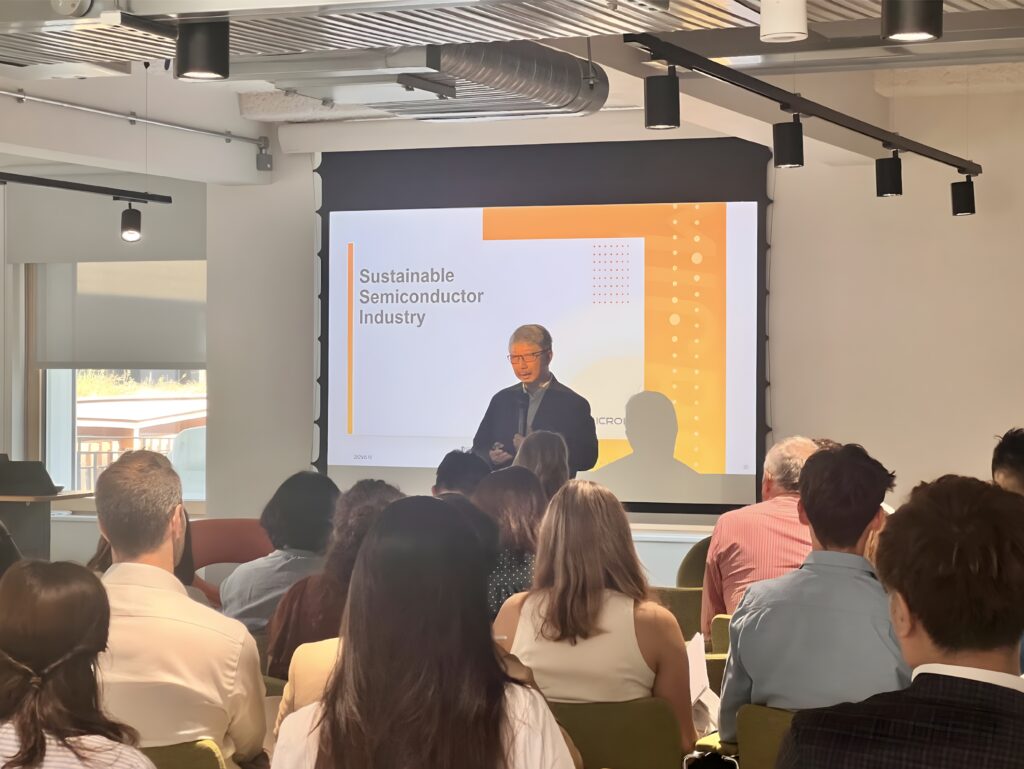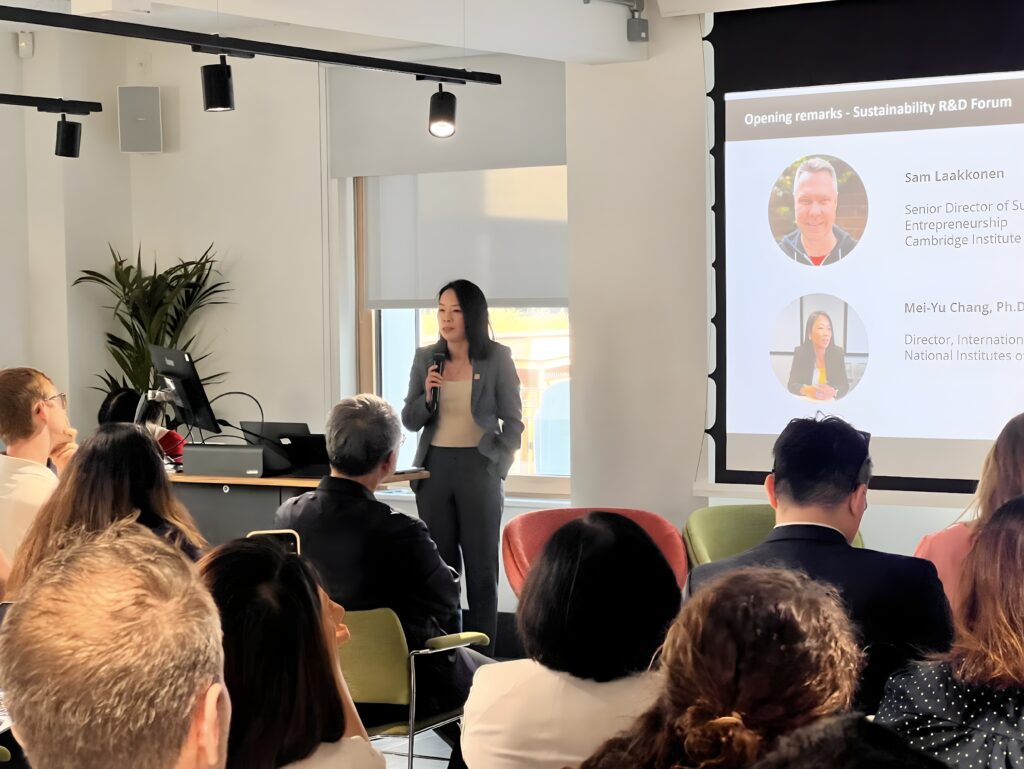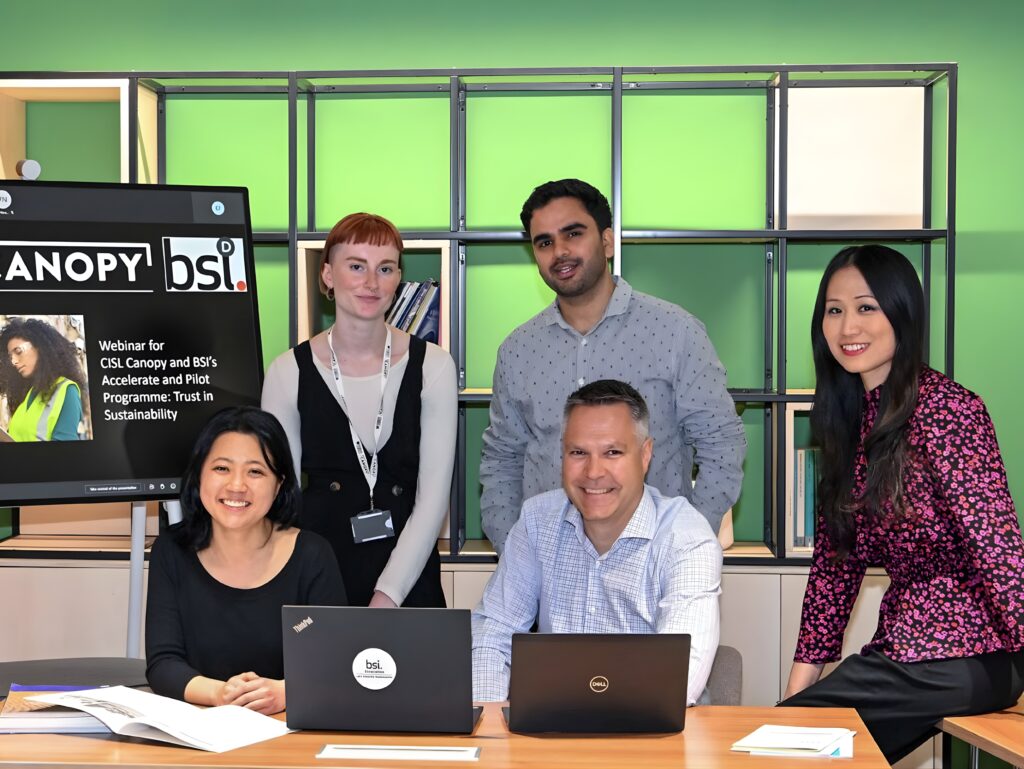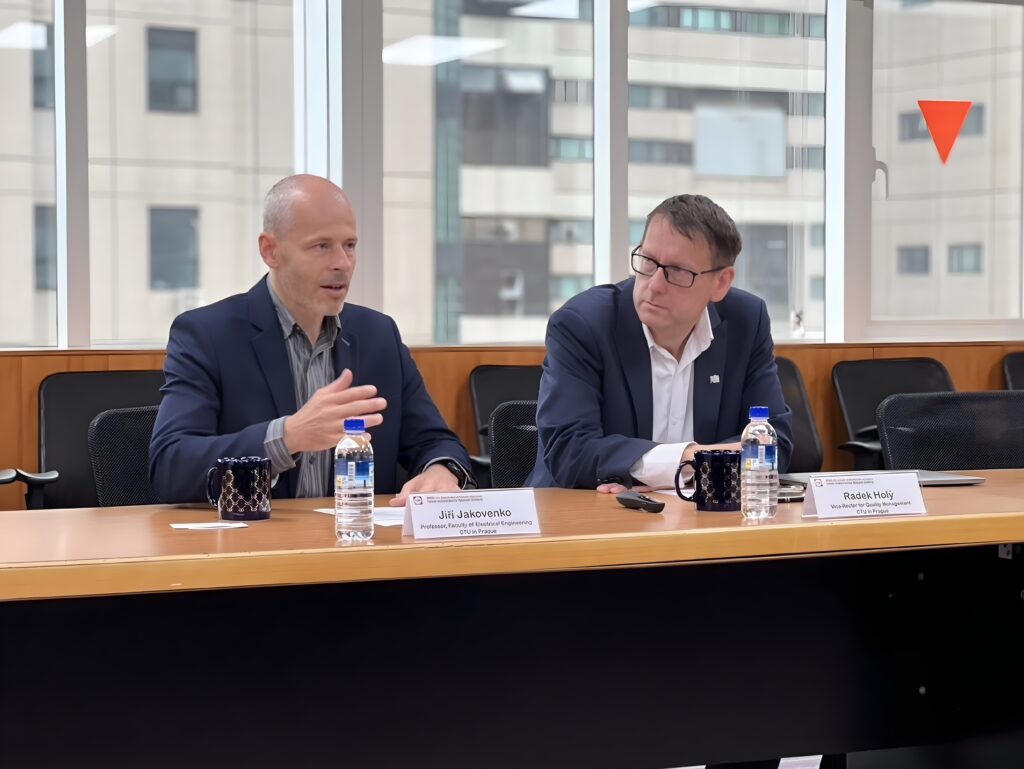In the autumn of 2025, the Entopia Building at the University of Cambridge—a landmark of green innovation in Europe—became the stage for a dialogue that stretched far beyond academia. Co-hosted by the Cambridge Institute for Sustainability Leadership (CISL) and Taiwan’s National Institutes of Applied Research (NIAR), the Sustainability Research and Development Forum centred on three pivotal themes: the net-zero transition, resilience in the built environment, and sustainable semiconductors.
The forum convened leaders from across the United Kingdom, Taiwan, Singapore, Czechia, Portugal, the United Arab Emirates, and Finland. Entrepreneurs, industry pioneers, academics, and policymakers came together to craft what was, in essence, a knowledge symposium spanning continents and pointing towards the future.
The scale and stature of the gathering were evident in its participants. Global enterprises such as Nvidia, Intel, ARM, and Bosch joined forces with leading institutions including the University of Cambridge, the London School of Economics, the University of Helsinki, and the Czech Technical University. Professional bodies such as the British Standards Institution and the Royal Academy of Engineering lent further weight. For several days, the Entopia Building was transformed into a global stage, where the languages of technology, industry, academia, and policy converged to sketch a shared blueprint for sustainable R&D.
Yet the true value of the forum extended well beyond the walls of Cambridge. Media outlets across multiple nations continued to track its outcomes, while institutions pursued follow-up discussions and new collaborations. Bilateral research projects, international talent exchanges, and pilot programmes in emerging markets began to take shape. What started as a forum is now evolving into a dynamic network stretching from Cambridge to Prague, from Taipei to Singapore, and onwards to Lisbon and Helsinki. This momentum has not only aligned Taiwan’s technological capabilities with Europe’s policy and research frameworks but has also elevated sustainability itself—from a technical subject to a diplomatic language, a cultural dialogue, and a strategic choice.
As the forum’s official media partner, The Icons subsequently held in-depth interviews with three pivotal figures: Dr Mei-Yu Chang, Director of the International Affairs Office at NIAR; Sam Laakkonen, Senior Director at CISL; and Professor Radek Holý, Director of the Advanced Chip Design Research Centre in Czechia. From the perspectives of science diplomacy, innovation culture, and strategic balance, each offered distinct insights. Yet all converged on a singular conclusion: when technology, diplomacy, culture, and strategy intersect, sustainability innovation becomes the driving force capable of reshaping the world’s future.

Dr Mei-Yu Chang: Science as Diplomacy, Innovation as a Global Responsibility
“We follow the principle of leveraging our national strengths to address global needs.” With this opening statement, Dr Mei-Yu Chang, Director of International Affairs at Taiwan’s National Institutes of Applied Research (NIAR), distilled the very spirit of the forum. For her, science is not confined to laboratory results; it is a language the world can read. And innovation is no longer just technical progress—it is an assumption of international responsibility.
She outlined three fields of collaboration that emerged from the dialogue. In the net-zero transition, Taiwan showcased capabilities in carbon capture and storage (CCS) and high-performance computing for carbon-negative research. These complemented Europe’s advances in cement-sector decarbonisation technologies, creating tangible opportunities for synergy. In built environment resilience, Taiwan’s expertise in seismic retrofitting, disaster early warning systems, and AI-driven smart city applications resonated directly with Europe’s pursuit of ESG-driven property data platforms. In semiconductors, Taiwan’s silicon carbide wafer processing and low-power AI chip design extend far beyond industrial gains, forming an indispensable cornerstone for global sustainable transformation.
She stressed that what underpinned these collaborations was not mere “technology transfer” but a deeper alignment of values. “Science is diplomacy, innovation is responsibility.” Examples from the forum illustrated this point: joint projects between Taiwanese startups such as Microip, DEUVtek and Light Momentum with the Czech Technical University, together with NIAR’s formal agreements with international partners and ongoing exchanges with global experts. “Through bilateral research programmes, technology transfer mechanisms, and participation in international forums,” she explained, “Taiwan’s scientific achievements are increasingly embedded into other countries’ systems and industries, becoming gateways to bilateral and even multilateral cooperation.”
Dr Chang also placed emphasis on the strategic importance of talent mobility. NIAR oversees seven national laboratories with a vision of “pursuing global excellence while creating local value.” It has long promoted professional training to help students bridge into industry, upgrade in-service professionals, and enable academic exchange through visiting scholars and overseas placements. “Talent is the true key to turning research into international influence. Only by enabling young people to cross borders can scientific cooperation move beyond paper agreements and endure through generations.”
At the close of our interview, Dr Chang elevated her perspective further: “Taiwan does not wish to be seen merely as a link in the global supply chain. We want to be recognised as a partner that stands alongside the world in addressing shared challenges. What we aspire to is not simply the demonstration of technology, but the assumption of greater responsibility.”

Sam Laakkonen: From Local Contexts to a Shared Global Destiny
“Cross-border collaboration is essential. We can not only learn from each other’s innovation cultures but also share practical experience.” Sam Laakkonen, Senior Director at the Cambridge Institute for Sustainability Leadership (CISL), began his reflections by lifting the value of sustainability innovation to the level of cultural context. For him, innovation is not merely a methodology—it is shaped by the institutions, geography and history of a place.
He drew particular attention to the power of policy. “In Europe, sustainability innovation is often policy-led.” For decades, Europe has led the world in drafting sustainability regulations and standards. Though sometimes seen as onerous, these frameworks provide innovators with foresight, signalling where global policy directions are likely heading. In his words, this “institution-first” culture defines the European innovation landscape.
By contrast, Asia—Taiwan in particular—faces different realities. “Taiwan’s environmental challenges are more acute, from extreme heat to natural disasters. The way Taiwan confronts these issues can inspire European innovators.” For Laakkonen, what Asia grapples with today may well foreshadow Europe’s future. Taiwan’s solutions are therefore not parochial but serve as rehearsals for Europe—and perhaps the wider world.
Yet Laakkonen’s focus is not on high-level agreements or macro frameworks but on grassroots practice. “I firmly believe in the power of grassroots exchange. We must encourage direct interaction and engagement, so that entrepreneurs and researchers can collaborate and co-create across borders.” In his view, real innovation rarely originates in conference rooms or policy texts; it emerges from experiments by entrepreneurs and researchers on the ground.
That is why he sees grassroots exchange as decisive. “Entrepreneurs often take learnings from these exchanges directly into their solutions.” In other words, cross-cultural dialogue does not remain rhetorical but becomes tangible in the form of products, services, and market-ready responses to social needs.
In this process, Cambridge and NIAR play a catalytic role. “They are not arbiters standing above the process, but enablers who create the platforms where innovation can intersect.” For Laakkonen, their greatest contribution is to unlock spaces where grassroots energy can be sparked and amplified.
His concluding remark carried both clarity and urgency: “We cannot operate in silos. To understand another region’s context is often to understand our own future.” For him, the ultimate goal is to lift sustainability challenges from regional concerns onto the trajectory of a shared global destiny. And in that trajectory, cross-national innovation is not an option—it is an imperative.

Radek Holý: Semiconductor Collaboration Between Europe and Asia Must Transcend Technology
Professor Radek Holý, Vice-Rector of the Czech Technical University and Director of the Advanced Chip Design Research Centre (ACDRC), views technology through a strategic lens. “I see the role of ACDRC as a crucial bridge between Europe’s ambition for technological sovereignty and Taiwan’s global leadership in semiconductor innovation.”
For him, ACDRC is not merely a research institution but a hub connecting industry, policy, and geopolitics. “ACDRC has the potential to become a centre of excellence, linking Europe’s strong research capacities with Taiwan’s practical know-how and industrial expertise—particularly in chip design, where Taiwan clearly leads.” Such a fusion, he explained, will not only accelerate technological breakthroughs but also serve Europe’s geopolitical imperative: reducing reliance on external suppliers and strengthening strategic autonomy.
When speaking of collaboration with NIAR, his tone was both resolute and optimistic. “This cross-continental partnership marks a new era.” He elaborated: “Taiwan brings distinctive expertise and global market experience, while Europe contributes robust research infrastructure, a stable regulatory framework, and an increasing political will to invest in strategic technologies.” For Holý, this is the essence of European technological sovereignty—not isolationism, but the ability to build balanced and respectful partnerships with global leaders.
Yet what excites him most lies beyond the technical. “What inspires me most is the resonance of values: our shared commitment to research freedom, an openness to innovation, and a long-term vision of sustainable technological growth.” He pointed out that Czechia’s strong academic foundations, paired with Taiwan’s agility in technological leadership, offer the potential not only to advance semiconductors but also to educate the next generation of engineers and scientists capable of thriving on the global stage. “These new generations will not only compete internationally but will create new value globally.”
In his closing reflections, Professor Holý balanced the voice of an educator with the realism of a strategist. “From what we have witnessed at this forum, the future is not merely about cooperation across borders; it is about building a value-based research community.” In his vision, semiconductor collaboration between Europe and Asia will no longer be confined to technical coordination, but will emerge as a stabilising and enduring force within the global order.

The Collective Force of Sustainability Innovation Is Redefining Global Standards
The Cambridge forum opened a new corridor between Europe and Asia, bringing Taiwan’s science diplomacy, Europe’s policy culture, and the strategic imperatives of semiconductor cooperation into one shared conversation. Dr Mei-Yu Chang framed Taiwan’s role with her dictum, “Science is diplomacy, innovation is responsibility.” Sam Laakkonen urged that innovation must be grounded in lived context and grassroots practice. And Radek Holý combined education, strategy, and values to point towards a research community built on cooperation.
From different vantage points, the three leaders ultimately converged on a single truth: sustainability innovation is no longer optional—it is a global responsibility of our age.
As the official media partner of the forum, The Icons observed that this was far more than a gathering of experts. It was a living testament to how Europe and Asia can co-create the future together. From Cambridge to Taipei, from Prague to Singapore, and onwards across the globe, the momentum of sustainability innovation is crossing the frontiers of industry, academia, and diplomacy. This momentum is not only accelerating technological advancement but is also reshaping the very standards and principles of international collaboration.
Recommend for you: